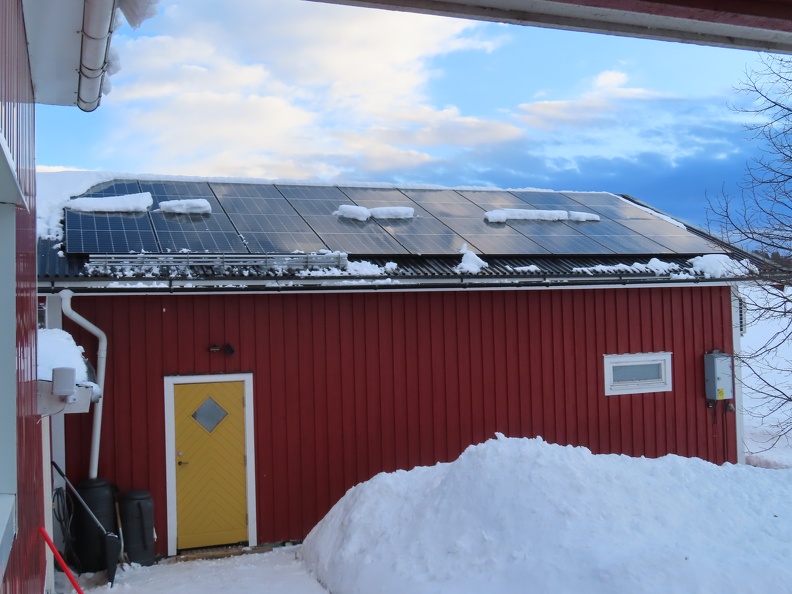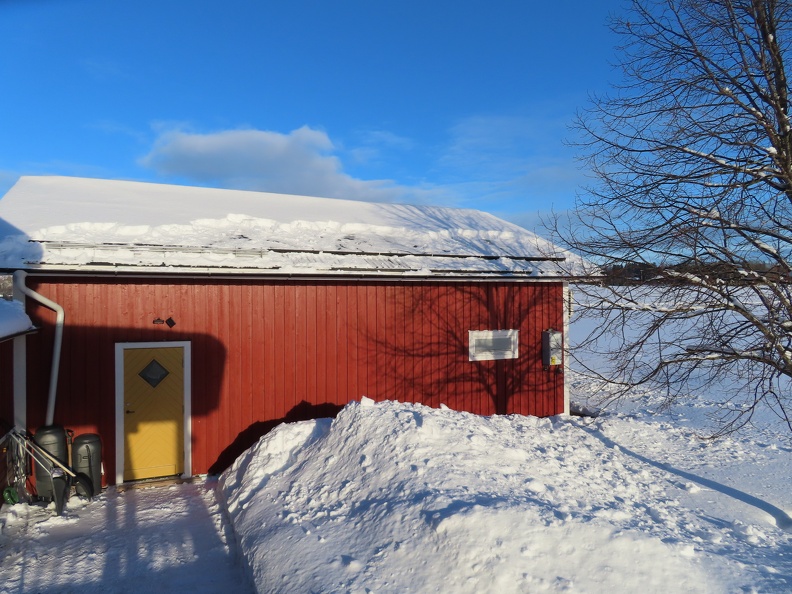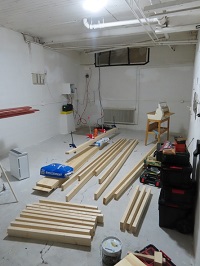2022-02-20 Winter Solar
This winter, I’ve been clearing the snow off the solar panels. I wanted to see it clearing the snow had any significant effect on the snow build-up and energy output.

Garage System
We had panels put in during autumn last year. The system is a 5.8Kw array, grid-connected without local storage. The panels are on a 30-degree sloped roof facing southwest. The expected payback period is 10 years, but I’ve not yet completed a years output to comment.
Solar Feasibility in Northern Sweden
We use electric heating (via a ground source heat pump). When the heating load is highest, the solar output is the lowest. This is a combination of snow on the panels, short daylight hours and low sunlight intensity. This increases the payback period. It can also make summertime electricity export payments more important. The normal advice is to aim to offset the electricity consumed such that you are not buying from the grid.
Some people like to claim snow makes no real difference to panels, but I found that anything over a small dusting of snow causes a notable drop in wattage. Any depth of snow more than a fingertip reduces output to the point the inverter can do nothing useful.
So every time you walk past the garage you think “we could knock the snow off to make more power”. But my solar installer stated that winter output can be 5% of the total years generation. He advised that it was not worth clearing the snow off the panels.
We used to live off-grid in the UK with a smaller solar array feeding a battery bank. Every watt generated in the winter from the sun was a bonus that meant less need for running the generator. The generator needed petrol and was noisy so using it less was great. As a result, I can’t shake the habit of thinking about clearing the panels.
Alternative Approaches
The gentle installation angle means the panels are good for high summer sun. The angle is not so great for the winter. The low angle also means the snow doesn’t slide off readily.
If I was living off-grid here, I’d use vertical panels on the walls to face the low sun. The aim would be to benefit from the sunlight reflected off the bright snow and to avoid the need to clear snow from the panels.
I’d also watch out for shading on parts of the array.
For off-grid, I recall experiencing that lithium-ion batteries were a massive life improvement over lead acid. The key features are their almost perfect charging efficiency and discharge behaviour. If I had to use live off-grid here I’d have lithium-ion batteries kept warm indoors such as in a brick or concrete fireproof area of the basement. Li-ion batteries need to stay above zero degrees when being charged or they can get permanently damaged.
Snow Clearing
But this time I’m not off the power grid, so I’m clearing the snow for fun, and to experiment. You can get special tools for clearing snow off the roof, but currently I have a ladder and an old hockey stick.
When it snowed a lot, clearing slabs of snow from the bottom parts of the panels had little effect that day. Presumably, because the rest of the array was shaded and my setup isn’t isolating the two. BUT… it seemed that clearing the bottom of the panel made “shedding” more likely. When the sun rose the next day, the snow-slab above would slide down the panel (called shedding).

So when it’s around -2C and I clear the snow from the bottom of the panels, the sun warms up the black panel enough to melt the bottom surface, which reduces friction and causes the slide. This is especially exciting when the entire roof-covering of snow comes off at once. It is about as much snow as the size of a small car.
Things I’d change after one winter?
I would remove the “snow fence” that stops snow falling by the garage door. Instead, I would fit a small peaked roof above the door. That way the snow can fall away from the panels without risk to anyone at the door below.
If I fitted future panels I would go for vertical panels where possible. I’d also use different orientations to give electricity at a wider variety of times. This should help offset electricity consumption at sunrise. Especially as the morning is an expensive period for electricity pricing.
If I was off the grid, I would isolate groups of panels. That way snow remaining on one panel doesn’t impact the output of the rest of the panels. However, for my grid tie set up the time to payback the cost of the modules would likely not be economical.

